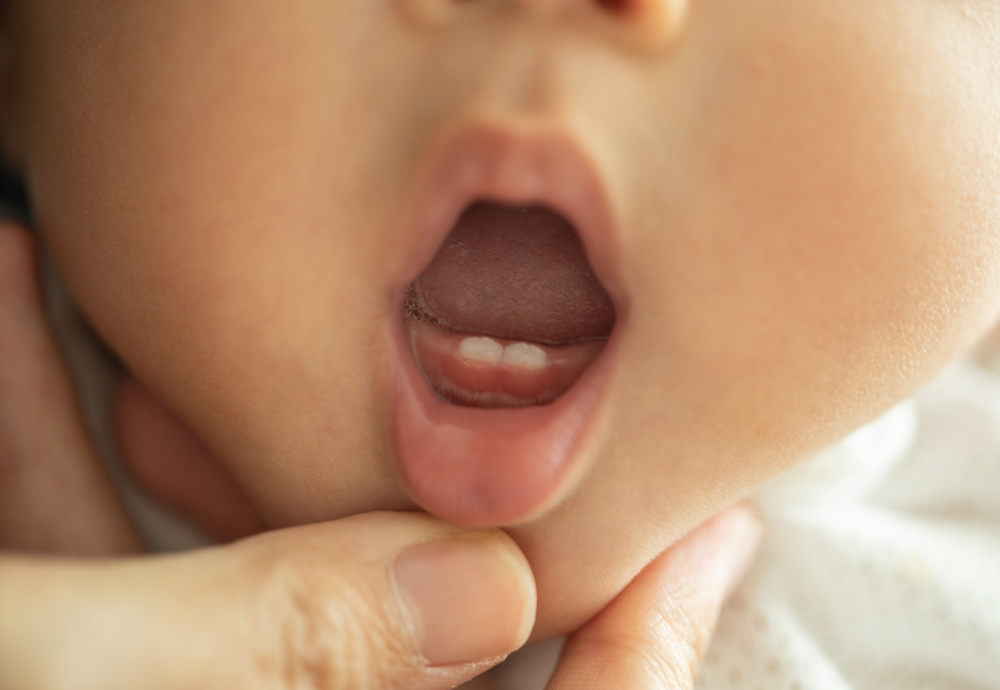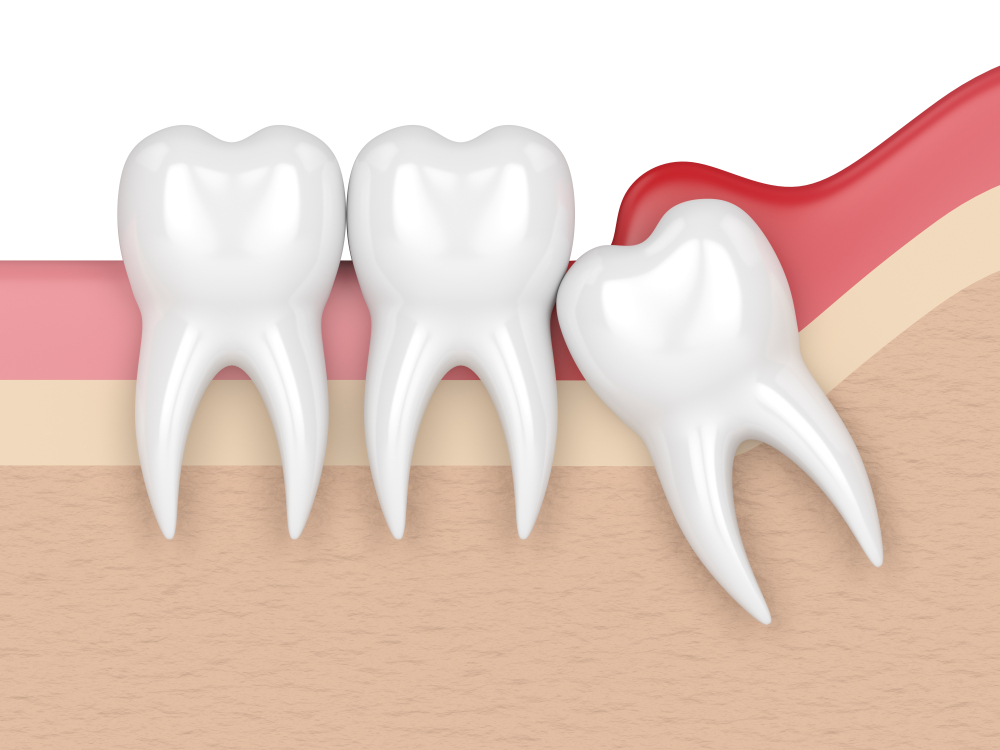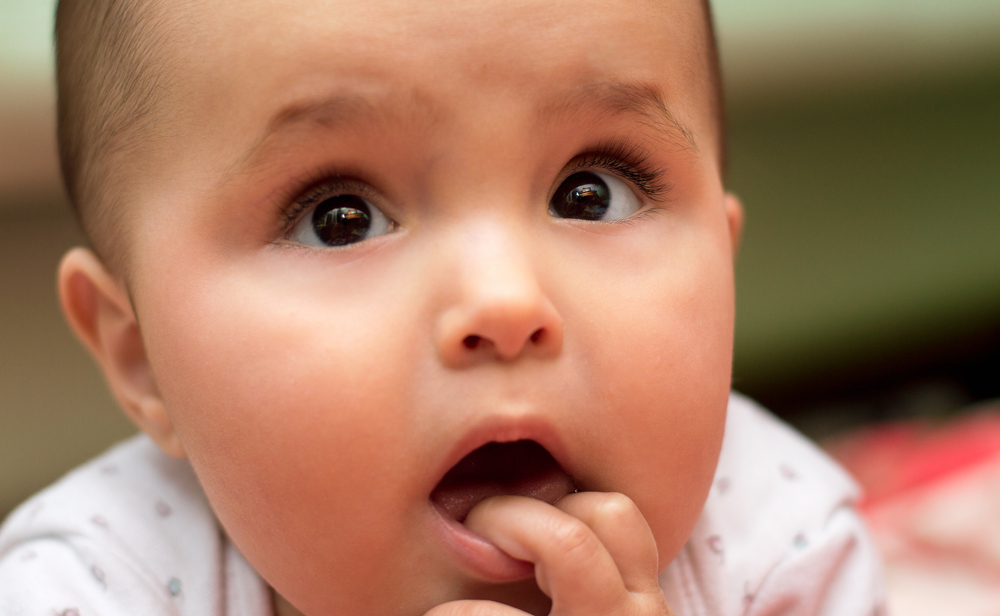The process of teething can be a stressless one for some babies. On the flip side, it can be very difficult for some others. How ever the dice rolls for your little one, what really helps is keeping an eye out for the signs of teething. In addition to knowing that teething is around the corner, identifying these signs helps you prepare adequately for the teething journey.

Some of these symptoms include excessive drooling, gnawing on anything within their reach, rubbing on the ears a lot, being very irritable, and sometimes, inability to sleep. Another rare, but possible, sign of teething is the appearance of eruption cysts.
Most times, this appears as a little bump or grump in your baby’s gum. They may look strange and alarming but they are usually very harmless and they resolve with time.
In this article, you’d find out what an eruption cyst is; the common symptoms, the possible causes, and preventive tips. Furthermore, this post provides you with reliable info on how long eruption cysts last when they do happen, and when to see a pediatric dentist.
Also, there’s an extra tip to help you take care of your baby’s dental health.
Let’s Get Started!
What are eruption cysts?
An eruption cyst is also called a congenital eruption cyst or a hematoma cyst. The name largely depends on the kind of fluid it contains. Although eruption cysts are more common in older children who are growing their adult teeth, they can also occur in babies.

An eruption cyst happens when the tooth is developing and a small sac or bubble filled with fluid forms. This becomes swollen and sensitive. The cyst can grow on the surface of the gum or just under the growing tooth. Usually, the cyst goes away on its own without treatment.
Common Symptoms of an Eruption Cyst
Both the name and the sight of an eruption cyst seem painful, but in reality, it is not.
Although it does not hurt, an eruption cyst can make your baby’s gum tender. If your baby has an eruption cyst, you will notice any or all of the following:
- A bluish or reddish bump over a developing tooth.
- A small blue, yellow or white-tinged dome or bubble.
- A slight swelling, or redness, may also appear around the area of the eruption cyst.
- Most of the time, eruption cysts are less than half an inch in diameter.
What are the Possible Causes of an Eruption Cyst in a Baby?
Most eruption cysts seem to form spontaneously without any obvious cause. However, in some other cases, it may be due to:
- Cavities in children: This may be genetic, caused by trauma or lack of space for the tooth to grow in.
- Separation of dental follicle from the crown of an erupting tooth.
- Dental infection or tooth decay.
- Irritation or infection of the gum.
- Overcrowding of the gum: which occurs when two teeth are growing side by side

Treatment of Eruption Cyst
Treatment is usually not needed for an eruption cyst as it may resolve on its own with time. This may be after the tooth grows and pushes through the cyst.
Sometimes, the growth of the tooth may be impacted. This is a sign that the eruption will last for a long time. In this case, you need to see a pediatrician or dentist who will monitor the growth and guide you on what to do.
In the case of a stuck or impacted tooth, a treatment option includes removing dense or fibrous tissue to help the tooth grow properly. Another option is opening the top of the eruption cyst to free the tooth.
Nevertheless, surgical options for treating eruption cyst in babies is very rare.
How Long Does it take for an Eruption Cyst to Go Away?
Most of the time, an eruption cyst will go away in a couple of days or weeks.
At this time, the tooth would have grown above the gum line. Although in some cases where the tooth is slowly growing or impacted, the eruption cyst may last for as long as 4 months.
How can an Eruption Cyst be Prevented?
There are a number of preventive measures you can put in place to prevent your baby from having an eruption cyst.
- First, the importance of seeing a dentist cannot be overly emphasized: This is especially important if your child has had previous infections or damage to the tooth. The dentist will treat the tooth to prevent it from becoming a source of infection later on. Following treatment, there should be no cyst growing in the tissues around the tooth.
- It is possible that your child is suffering from a buried tooth. This will be confirmed by your dentist who will recommend a scan to confirm and assess the dimensions of the tooth location and health.
- Early detection will help to prevent the cyst from growing bigger or prevent it from forming at all by removing the potential elements that may lead to cyst formation.
When to see a Pediatric Dentist
You should see your baby’s pediatric dentist if an eruption cyst is lasting longer than a couple of weeks. If you also notice any other associated symptoms with the eruption cysts like fever, you should see your pediatric dentist. Also, if you see any bleeding or white pus coming from your baby’s gum, you should see your pediatric dentist.

Furthermore, we recommend booking a dentist’s appointment for your baby on/before his/her first birthday.
An Extra Tip
Always bear in mind that eruption cysts, though rare in babies, are common in young children. Therefore, it is important that you prevent this by booking a dentist appointment as early as possible.
You can also maintain your baby’s dental health by gently cleaning their gums with a soft and sterile washcloth. Once their teeth start coming in, you can use a soft-bristle toothbrush that is specially made for babies. Read about when do children start losing teeth
You’ve got this!
References
Alline J de Oliveira, Maria LG Silveira,Danilo A Duarte,and Michele B Diniz (2018). Eruption Cyst in the Neonate. International Journal of Pediatric Dentistry. Jan-Feb; 11(1): 58–60. Published online 2017 Feb 1. https://doi.org/10.5005/jp-journals-10005-1485
Ricci, H. A., Parisotto, T. M., Giro, E. M., de Souza Costa, C. A., & Hebling, J. (2008). Eruption cysts in the neonate. The Journal of clinical pediatric dentistry, 32(3), 243–246. https://doi.org/10.17796/jcpd.32.3.7464433876505u15

